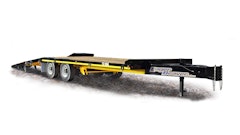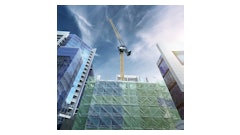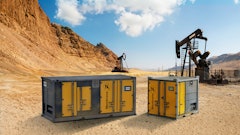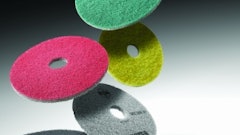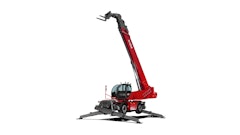For contractors operating fleets of vehicles it appears 2007 will offer models that sacrifice miles per gallon to improve the environment, and offer a variety of technological improvements that will not only require a change of maintenance practices but, predictably, will require more maintenance parts and result in increased labor costs.
Over the past 10 years technological improvements have actually resulted in less maintenance required on fleet vehicles. Examples include:
- Extended oil changes
- Longer brake life as a result of ABS brakes
- Application-specific tires/treads that resulted in improved MPG
- Improved batteries, alternators, and starters
- Long-life lights
- Sealed front-end, universal joints
- Improved suspensions
- Longer warranties
- Engine Electronic Control Unit (ECU), or Electronic Control Module (ECM) computers
These and other improvements lead to improved, more-efficient service and maintenance at less cost. But changes and improvements in 2007 models are expected to have the opposite effect, requiring more attention to vehicle maintenance.
For example, additional diesel improvements will be implemented to further reduce nitrogen oxide and particulate emissions. Similar changes in 2006 models resulted in some environmental improvements but also lower MPG and higher operating under-hood temperatures. These higher temperatures under the hood generated premature under-hood failures, which caused higher maintenance costs. Examples are:
- Wiring insulation, connectors, and connections saw increased incidents of repair due to higher under-hood temperatures. Vibration loosened connections and harness bandings loosened harness locations causing movement and resultant insulation damage.
- Heat soaking caused higher ranges of hot and cold heat ups and cool downs, working on hose integrity and causing premature failures.
So budget for new 2007 models for added repairs in rubber hoses, insulated wires, and gaskets that deteriorate from heat – components that used to last 100,000 miles that will now last only 60,000 miles because of heat sinks.
Oil. Exhaust gas recirculation (EGR) and particulate traps enable EPA goals to be reached but at a still-higher operating temperature which will require more improved engine oils, which are still being developed and tested. Also better oil filters will require shorter oil change intervals initially to control oil contamination until we research a "sweet spot" of efficiency.
Looking to reduce our dependence on petroleum products and crude oil, synthetics look attractive if their production can result in lower cost and greater acceptance. It's easier on oil manufacturers who can produce single lines more economically than multi-product lines.
So rather than a fleet stocking many different oils to use in changes and add-oil programs, we look to standardize for smoother operating processes, deeper purchasing discounts based on higher volumes that can be used in 2007, 2002 and pre-2002 engines.
Fuel. Ultra-low diesel fuel will be used to ensure reduced exhaust emissions with improved filtration, initially to catch dirt and residue left by previous high-sulfur fuel use. Like the use of bio-diesel that cleans out inventory tanks and vehicle fuel tanks, we must pay attention to detail of all our on-vehicle fuel tanks and filtration systems for our in- and above-ground fuel inventory systems.
Filters. Filter manufacturers will develop and produce better fuel filters for our fuel dispensers and vehicle use but we should plan and fund for increased filter use and modify our preventive maintenance programs to accommodate our changes in frequency. We need to adjust the preventive maintenance frequency of only the affected vehicles until we verify that they fit the standard preventive maintenance frequency within our mixed fleet.
Particulate Traps. Next up is continued excess heat challenge because of EGR and particulate traps. The particulate trap is designed to be placed in a calculated position in the exhaust system to take advantage of the exhaust temperature 900°F in the exhaust process to be efficient. It will require periodic service to remove the particulate matter and should it not be efficient because of the wrong fuel used or the supplemental selective catalytic reduction element (Ammonia type or diesel fuel) not being supplied for exhaust after treatment.
If the particulate trap clogs up, the engine will stop running and as it clogs up the miles per gallon will be reduced, but the electronic control module (ECU-ECM) will tell us that. Vocational trucks that have bodies and mounted equipment installed will have to have their equipment installed around the exhaust system that is installed on the chassis. Should modifications not fit the OEM's specifications they will disturb its efficiency.
Service intervals need to be established for the particulate trap maintenance. Particulate traps will be heated internally to 900°F, which will require heat-deflecting shields to keep the higher temperatures away from mounted equipment accessories. Care must be exercised to note ground cover when parked and idling for Power Take Off operations which increase the incidents of fire risk. (Disposal of particulate trap waste material also could require fees for proper cradle-to-grave removal and disposal.)
Exhaust Gas Recirculating (EGR) Systems like the particulate trap systems will have computer modules tracking their efficiency. EGR will take some of the exhaust gases at 2000°F and cool them with outside air pushing them through a ribbed cooler with single or multiple turbo chargers that are exhaust gas driven air intake systems to go into the diesel engine cylinders.
Nitrogen oxides are increased when you increase combustion temperatures to get more efficient combustion. The more fuel pushed into the cylinder, the more air is needed to mix with the fuel to get more power. The more power, the higher the temperature of combustion and the better the MPG. This is what was done in the late 1990s to increase MPG to increase efficiency with less fuel.
In the old, pre-1990 days you manually adjusted injections and diesel fuel pumps until black smoke (raw unburned fuel) came out the exhaust (particulate matter). More fuel, more power. The fuel also acted as a coolant in the combustion process. Too much black smoke, you manually adjusted the injector causing the problem.
Now an ECU-ECM engine computer regulates the combustion process to reduce and/or eliminate black smoke. More air and less fuel increases combustion temperatures, which increases nitrogen oxides, Still some fuel doesn't burn, resulting in particulates or particulate matter.
In order to maintain these systems technicians must learn diagnostics to know filters, oil and fuel, additives (diesel fuel vs. urea ammonia substance) in delivery systems to the particulate trap by reading the electronics and proactively look at the threshold limits and note where the vehicle approaches these thresholds, and initiate corrective action. They must note where the mechanical problems are that drive the EGR systems.
So in late 2006 you have options: Repaint what you have at increased operating and maintenance costs or (if these costs exceed new costs impacting reliability) you can rebuild or buy used, or you can do nothing (the worst alternative).
Fleet people need to budget for increased maintenance costs of their present fleet whatever its average age, budget for rebuild, budget for used replacements or additions, or take the capital risk for new vehicles that will cost up to $8,000 more than 2006 models (plus 10% more for higher maintenance cost).
This impacts companies that want to expand their business and expand their fleet, buy additional new with 2007 risks, repair used vehicles, buy maintained used vehicles from OEMs, or buy reconditioned vehicles.
All this requires a thorough understanding of the newer technology so that we can measure meaningful invoices to proactively maintain the new additions to our fleet family economically.
John Dolce is a fleet management specialist who will present "Fleet Maintenance for the Small Contractor" at National Pavement Expo West, Nov. 30-Dec. 2 in Las Vegas. For more information visit www.nationalpavementexpo.com.



